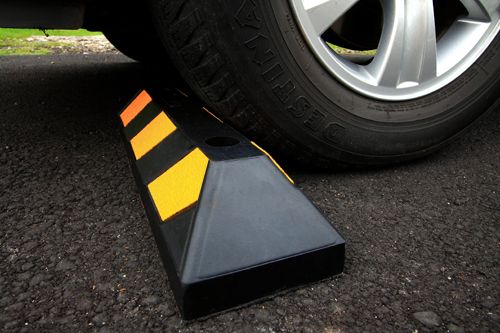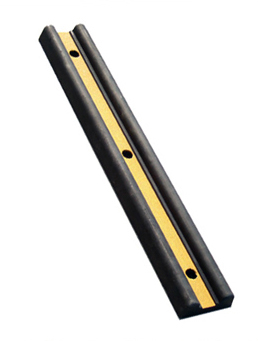Introduction
Explanation of speed bumps
Speed bumps are traffic calming devices that are designed to slow down vehicles and reduce their speed. They are typically made of rubber, asphalt, or concrete and are placed on the road surface at regular intervals. Speed bumps are usually 3-4 inches high and 12-14 feet long, and they have a rounded shape that forces drivers to slow down. They are often used in residential areas, school zones, and parking lots to improve safety for pedestrians and other road users. Speed bumps are effective at reducing speed and improving safety, but they can also cause discomfort and inconvenience for drivers.
Importance of road safety
Road safety is of utmost importance in any city, and New York is no exception. With a population of over 8 million people, the city sees a high volume of traffic on its roads every day. This makes it crucial to implement measures that ensure the safety of drivers, pedestrians, and cyclists alike. Speed bumps are one such measure that has been proven to contribute significantly to road safety. By slowing down traffic, they reduce the risk of accidents and help prevent injuries and fatalities. In New York, speed bumps have been installed in various locations, including residential areas, school zones, and busy intersections, to make the roads safer for everyone.
The Problem of Speeding in New York
Statistics on speeding-related accidents
According to the New York City Department of Transportation, speeding-related accidents have decreased by 60% on streets with speed bumps. In addition, the installation of speed bumps has led to a 67% reduction in injuries and fatalities caused by speeding. These statistics demonstrate the effectiveness of speed bumps in promoting road safety and reducing the number of accidents on New York City streets. It is clear that speed bumps play a crucial role in preventing speeding-related accidents and protecting the lives of drivers, pedestrians, and cyclists.
Challenges in enforcing speed limits
Despite the installation of speed bumps in New York, enforcing speed limits remains a challenge. The city has a large number of vehicles on the road, making it difficult for law enforcement to monitor every driver’s speed. Additionally, some drivers may not take speed limits seriously and continue to speed despite the presence of speed bumps. To address this issue, the city has implemented various measures such as using speed cameras and increasing police presence in high-risk areas. However, there is still a need for continued efforts to ensure that drivers adhere to speed limits and drive safely on New York’s roads.
How Speed Bumps Address the Problem
How speed bumps slow down drivers
Speed bumps are designed to slow down drivers and reduce their speed. When drivers approach a speed bump, they are forced to slow down to avoid damaging their vehicle or causing discomfort to themselves and their passengers. This reduction in speed can be significant, with some speed bumps reducing speeds by up to 10-15 mph. By slowing down drivers, speed bumps help to prevent accidents and improve road safety. Additionally, they can also help to reduce noise pollution and improve the quality of life for residents living near busy roads.
Benefits of speed bumps in reducing accidents
Speed bumps have been proven to be an effective tool in reducing accidents on New York roads. By forcing drivers to slow down, speed bumps help to prevent collisions and reduce the severity of accidents that do occur. Additionally, speed bumps can help to reduce the number of accidents caused by reckless or distracted driving, as they provide a physical reminder to drivers to stay focused on the road. Overall, the benefits of speed bumps in reducing accidents are clear, and they continue to be an important tool in promoting road safety in New York and beyond.
Types of speed bumps used in New York
In New York, there are several types of speed bumps used to slow down drivers and improve road safety. The most common type is the traditional speed hump, which is a raised section of pavement that spans the width of the road. Another type is the speed cushion, which is similar to the speed hump but has a gap in the middle to allow emergency vehicles to pass through without slowing down. The third type is the speed table, which is a wider and flatter version of the speed hump that provides a gentler transition for vehicles. Each type of speed bump has its own advantages and disadvantages, and the choice of which to use depends on factors such as traffic volume, speed limits, and emergency vehicle access.
Criticism of Speed Bumps
Negative impact on emergency vehicles
However, speed bumps in New York have also been criticized for their negative impact on emergency vehicles. Ambulances, fire trucks, and police cars need to respond to emergencies quickly, and speed bumps can slow them down. This delay can be critical in life-threatening situations, and it is a concern that needs to be addressed. To mitigate this issue, some cities have implemented speed humps that are designed to allow emergency vehicles to pass over them without slowing down. Additionally, emergency responders are trained to navigate speed bumps safely and efficiently. Overall, while speed bumps can contribute to road safety, it is important to consider their potential impact on emergency vehicles and find ways to minimize any negative effects.
Noise pollution
Noise pollution is a common concern associated with speed bumps. The sound of vehicles passing over the bumps can be disruptive to nearby residents, especially during the night. However, in New York, the Department of Transportation has taken steps to minimize noise pollution caused by speed bumps. They have implemented measures such as using rubberized materials and designing the bumps to be less steep, which reduces the noise generated when vehicles pass over them. Additionally, the department conducts regular maintenance to ensure that the speed bumps remain in good condition, which also helps to reduce noise pollution. Overall, while noise pollution is a valid concern, the measures taken by the New York Department of Transportation have helped to mitigate its impact.
Costs of installation and maintenance
While speed bumps are an effective way to improve road safety, their installation and maintenance can be costly. The cost of installing a speed bump can range from a few hundred to a few thousand dollars, depending on the size and materials used. Additionally, regular maintenance is required to ensure that the speed bumps remain effective and safe for drivers. This includes repainting the bumps to ensure visibility and repairing any damage caused by weather or heavy traffic. Despite the costs, many cities, including New York, continue to invest in speed bumps as a way to improve road safety and reduce accidents.
Conclusion
Summary of key points
In summary, speed bumps have been proven to be an effective tool in promoting road safety in New York City. They help to reduce speeding and encourage drivers to slow down, which in turn reduces the likelihood of accidents and injuries. Additionally, speed bumps are relatively inexpensive to install and maintain, making them a cost-effective solution for improving road safety. While some drivers may find them inconvenient, the benefits of speed bumps far outweigh any minor inconvenience they may cause. Overall, speed bumps are an important component of New York City’s efforts to create safer streets for all residents and visitors.
Recommendations for future road safety measures
In addition to speed bumps, there are several other road safety measures that can be implemented in New York City. One recommendation is to increase the number of pedestrian crossings and improve their visibility with better lighting and signage. Another suggestion is to install more bike lanes and protected bike paths to encourage safe cycling. Additionally, the city could invest in technology such as traffic cameras and sensors to monitor and enforce speed limits. By implementing these measures, New York City can continue to improve road safety and reduce the number of accidents on its streets.







